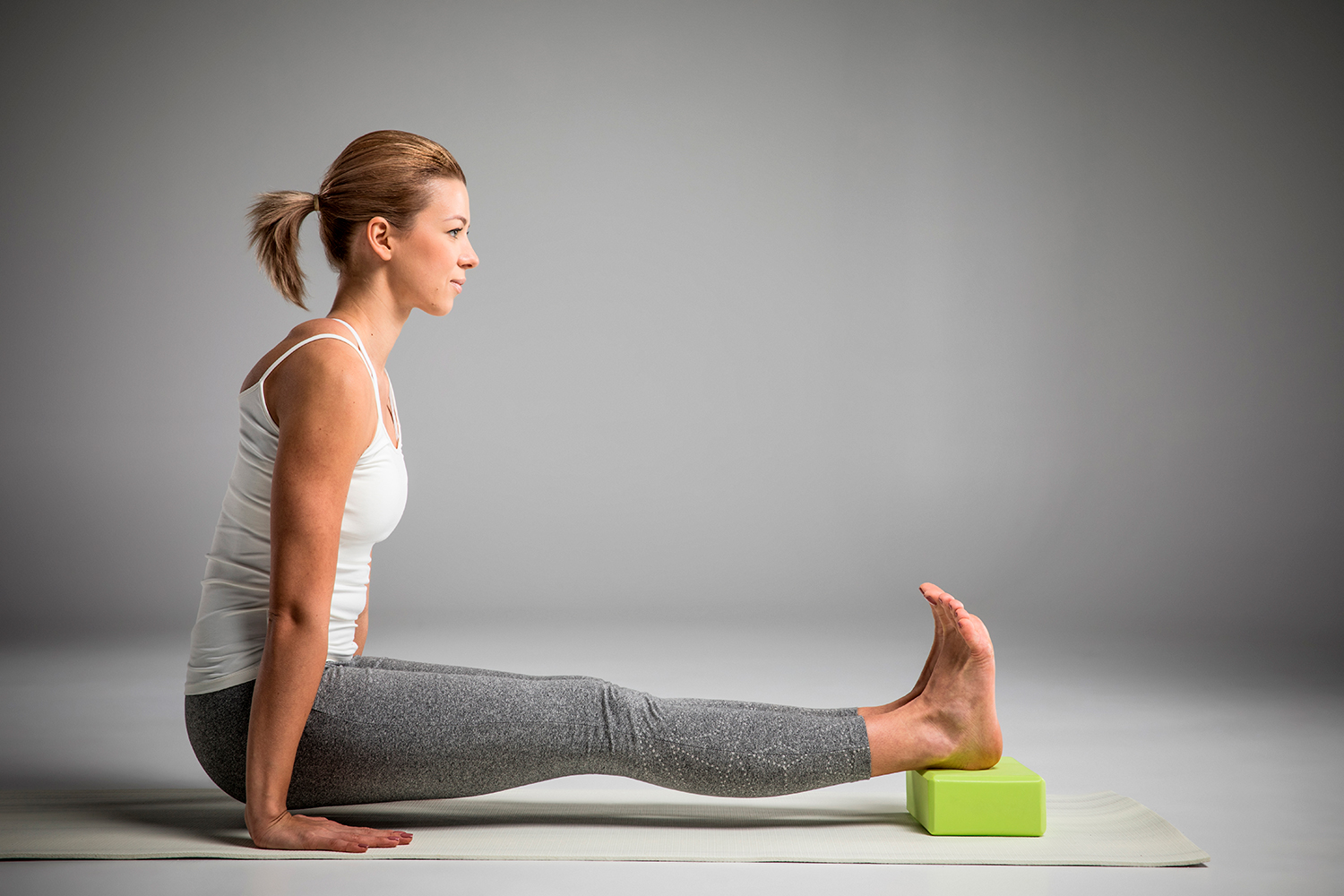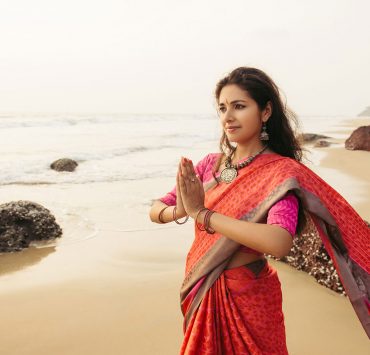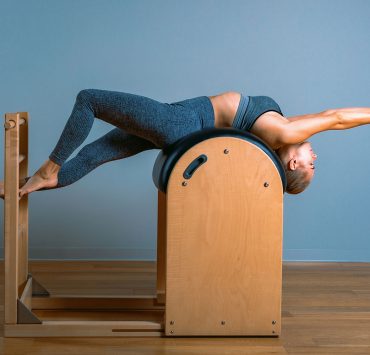
Paving the way for yogic living in Nebraska, Jacqueline Roberts…
One of the best things about yoga is that it doesn’t take much to start up your practice routine. Much of yoga is based entirely on your body and your breath. Aside from some comfortable clothes and a great yoga mat, there isn’t much you need to invest in to start practicing and growing.
There are, however, some benefits to investing in a few props to deepen your practice. Yoga blocks, for instance, can help you to achieve different stretches, modify poses, and align your body properly. They can be used for active or resting positions to help you get the very most out of your practice.
Both beginners and veteran students will benefit from the use of a few yoga blocks. If you are new to yoga, consider buying two blocks to help you prevent injury and work your way up to the more intermediate and advanced poses. The advanced student will enjoy the range and variety that yoga blocks offer us.
For something as simple as a yoga block, there are actually many different options on the market. There are many things to consider, such as weight, material, and eco-friendliness. Let’s explore the world of yoga blocks and learn what type of block will best support your unique practice.
Why You Should Use Yoga Blocks

As you may have discovered, yoga is a very versatile practice. No session is the same and no two people experience a class or sequence the same way. Yoga blocks help to expand these experiences even more.
Yoga blocks are helpful in three ways: to support our unique bodies through practice, to deepen our practice, and to prevent injury. Blocks can be used in a number of ways to help us achieve the proper alignment in poses, stretch deeper, or experience poses in different ways. Using blocks when we need them can improve our flexibility, posture, and prevent injury from improper practice.
Yoga blocks can also foster confidence and trust in your own body. By allowing yourself to make use of blocks, you can rest assured that you are supporting your body to your best ability and meeting it where it’s at. Some days you may need to use the blocks more than others. Some days you’ll want to experiment and really challenge yourself with the use of props and blocks. These simple additions to your practice only further develop yourself as a student of yoga.
The Myth About Blocks and Other Props
Many students of yoga think that props are only used by those who cannot attain a pose on their own. They think that using props is for those who are inflexible or inexperienced. While props do help some students to complete a pose fully without straining themselves as they increase their flexibility or range, blocks are so much more useful and purposeful. Anyone can benefit from the use of blocks – even your talented yoga teachers themselves. Many students advance through yoga over years and find that they like to use props more and more as they progress.
How to Use Yoga Blocks

Blocks can be used in many different ways, from supporting your body to reach postures you previously couldn’t, opening up areas of restriction, or even building strength or balance. Take a few classes with a teacher who makes good use of blocks to learn how they put these tools into practice. Play around with your blocks to see how they can best support you in your practice. Here are some of the top ways that blocks can enhance your yoga sessions:
- Chest Opener: Place a block beneath your mid-thoracic spine while laying face-up (or in Fish Pose) to open up and stretch the entire chest. Practicing this pose with a block can help you improve your other chest-opening poses like Lord of the Dance Pose or Camel Pose.
- Leg Strengtheners: Place a block between your thighs for Mountain Pose, Standing Forward Bend, and even a full Sun Salutation to help engage the legs and strengthen the muscles of the thigh.
- Stability: Practice balancing on a block in poses like Tree Pose, Half Moon, and Lunges to work on added stability, balance, and focus.
- Upper Body Booster: Hold on to a block and raise over head in positions like Warrior II, Extended Side Angle, or Extended Triangle to help increase the involvement of the upper body and build extra strength.
- Supported Release: Blocks can be used to release and relax different areas of the body depending on how you place them. Place a block beneath the sacrum and pull in one knee at a time to release the psoas. Place under the neck for a supported Savasana to relaxes the neck muscles.
What to Look for in Your New Yoga Blocks

Yoga blocks seem like a simple prop, and for the most part they are. But there are some things to take into account when choosing your blocks.
Material: There are a few different types of materials used for yoga blocks. The main sources are wood, cork, and foam. Wood is the original form of the yoga block, usually in varieties of bamboo, pine, or birch. These forms are long-lasting and easy to clean. Because they are heavy, they are not the best choice to travel to class with – best to keep these for a home practice. Cork blocks are another popular choice. They are lighter than wood, still sustainable, and often less expensive that wooden blocks. They are comfortable to use and non-slip. The downside of cork, however, is their porous nature which can make them difficult to keep clean and can lead to quicker degradation. Foam blocks are an alternative to wood and cork. They are extremely lightweight, easy to clean, inexpensive, and transportable. They are soft, making them great for supporting poses. Foam blocks are less sturdy than the other varieties, and are also less eco-friendly.
Size: Recently, different forms of yoga blocks (outside the traditional rectangular cube style) have come up on the market. Some are wedges, egg-shaped, or varied based on directed use. In general, however, the typical size for a block is either 4” x 6” x 9” or 3” x 6” x 9”.
Sustainability: These days, sustainability is a major factor for many yogis. Finding props that have longevity and are made from eco-conscious material is important. If this is you, look for blocks made from bamboo for home practice or cork for traveling to class.
Cleaning Your Blocks: Some blocks are inherently easier to clean than others. Wooden blocks and foam blocks tend to be the easiest to keep clean and therefore last the longest. Cork or other “flaky” type blocks (including recycled or chipped foam) have more potential for bacterial, moisture, or cracks to start to wear into the integrity of the block. They can still be high performing blocks, but make sure to clean and care for your blocks carefully to get the most out of them.
The Best Yoga Blocks

Now that we have explored the benefits, uses, and consdierations of yoga blocks, let’s see what the market has to offer us. Here are our top picks for yoga blocks for any yogi!
Lift and Lengthen Yoga Blocks by Lululemon; $18
The Lift and Lengthen Block is a dense foam block built for supporting you in your practice.
SueSport Yoga Blocks; $9.45/pair
These SueSport blocks are a great foam set for the beginner. They are affordable and easy to clean and carry.
HuggerMugger Cork Yoga Blocks; $21.95
HuggerMugger has created a sustainable, sturdy, quality cork yoga block – perfect for any practice. They are made of beautiful cork and are an eco-friendly choice.
Gaiam Yoga Block; $9.95
This block by Gaiam is sturdy, grippy, and lightweight, making it the perfect choice for the causal or dedicated yoga student. These come in many colors to suit your yoga style.
Barefoot Yoga Bamboo Yoga Block; $28
If you are ready to purchase a set of sustainable bamboo blocks for your home practice, these blocks from Barefoot Yoga are the perfect match. They are made hollow to help reduce the weight.
YogaMatters Chipped Foam Yoga Block; $5.99
The chipped version of a foam block offers a great sustainable choice for yogis who prefer foam. This block from YogaMatters makes great use of off-cuttings from traditional foam blocks, leaving no waste.
Enhance Your Practice with Yoga Blocks

Whether you are a longtime student of yoga or just starting out, if you’ve never used yoga blocks before you are missing out! Blocks are not just for those who need a little assistance making it into position. Blocks are used and loved by even the most advanced yogis who wish to fully support their body, reach deeper physical postures, build strength, enhance balance, and facilitate release.
Blocks are thankfully relatively inexpensive. For as little as $5 per block, you can be well on your way to enhancing your yoga practice. For a more dedicated purchase, you can invest in sustainable bamboo blocks or splurge on recycled foam or earthy cork.
Depending on your practice and yoga goals, you may choose to look into different types of blocks to suit your style. Try out a few different kinds and see what works best for you.
What's Your Reaction?
Paving the way for yogic living in Nebraska, Jacqueline Roberts is adored by her students as a constant source of support and inspiration. A knack for writing allows her to share what she has learned with the world.














